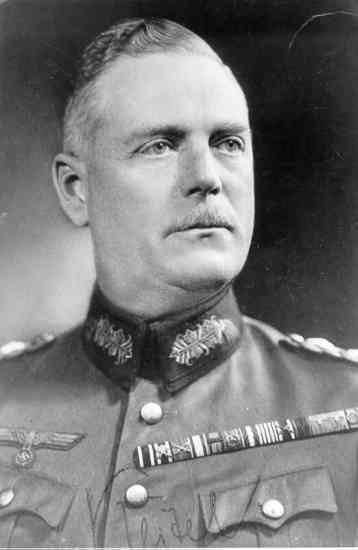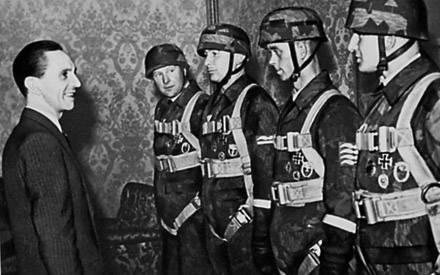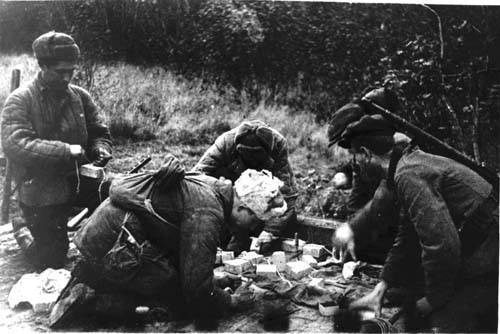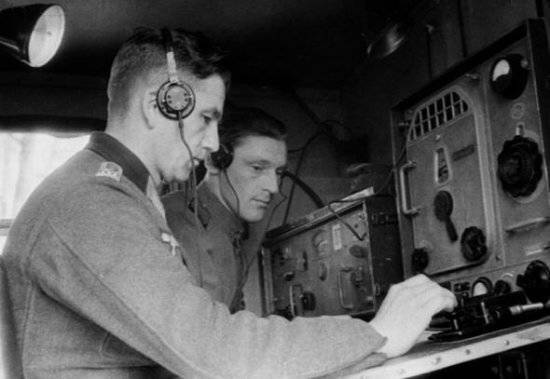"The Moment of Truth"
Field Marshal Wilhelm Keitel (Chief of Staff of the Supreme High Command of the German Armed Forces).

The Soviet counterintelligence, sadly admitting this, turned out to be little prepared for the expected war with Nazi Germany. By the beginning of the war, the special services were greatly weakened by the repressions of 1937-1939 and had practically no means and ability to resist the well-trained Nazi special services.
By May 1941, a powerful intelligence center "Headquarters Valley" was created in the Abwehr system, the purpose of which was to lead all sabotage and espionage operations on the future front. With all the German army groups, there were large units of the Abwehr (abwehr command), as well as bodies of the SD and the Gestapo.
In our first directive of the NGO Directorate of 22 on June 1941, after the outbreak of hostilities, Nazi Germany was not even mentioned as the main opponent, according to the directive, all attention should be paid to the detection of anti-Soviet elements in the Red Army. And only five days later, another directive came out on June 27, providing for all measures to counter an external enemy.
At the same time, during the offensive, a lot of secret information left in the occupied territory fell into the hands of the enemy; therefore, the strategic initiative at the beginning of the war was on the German side.
At the first stage, the main task of the army counterintelligence and counterintelligence of the state security organs was the fight against the subversive, sabotage activities of the German special services and the elimination of the deserters-traitors in the front line. At the same time, counterintelligence also had to manage to organize partisan detachments, camouflage echelons, and ensure relocation of important industrial facilities to the rear.
Even more work in counterintelligence came after the Germans began to parachute sabotage groups into the front-line zone. In the rear areas of the fronts and in the combat zone, special forces began to search for spies and saboteurs (the actions of one of these units were very well described in the book “The Moment of Truth” by V. Bogomolov). It was also organized to identify all possible points and routes of the saboteurs on the front line and in the front line, near which ambushes and posts were set up, by means of barrage services specially organized for these purposes. Resident agencies and operational groups were also created by state security forces. sabotage activities in the rear of the enemy.
In the first year of the war on the Western Front, military counterintelligence and NKVD troops detained more than a thousand spies and saboteurs, and in one period of the battle of Moscow more than 50 sabotage groups and over 300 agents were neutralized. And this is despite the fact that by the beginning of the war the secret services did not have time to complete the reorganization after the Yezhov purges. Attempts by the German intelligence service to disrupt the work of front-line and front-line communications and bring disorganization into the control of the Soviet troops failed.
By the end of 1942, all the difficulties that counterintelligence had encountered at the beginning of the war were overcome, the forces were restored, the system of operational and preventive measures to combat espionage, sabotage and other enemy intelligence and subversive activities was fully operational. Fascist intelligence services did not manage to obtain important information about the preparation of major offensive operations by the Red Army during the first years of the war.
In 1942, the German special services were especially zealous in the Kavkaz and the Stalingrad directions. In these directions, the bulk of well-trained German saboteurs were thrown, the purpose of which was the explosions of the crossings and the collapse of military echelons. In this region, from January to November 1942, 170 Fascist agents were exposed and captured.
In the same year 1942, our counterintelligence broke down the plans of Fascist Germany to start a chemical war. The first information about the development and cultivation by the Nazis of the bacteria cholera, plague and typhoid were obtained from the arrested officers of the German intelligence service. To check and confirm the data received, a special squad of security officers, commanded by Lieutenant-Colonel of State Security Stanislav Vaupshasov, who managed to obtain information that the Nazi command was sending a test batch of chemical artillery shells to the front, was abandoned to the enemy, the whole world learned about the fascist criminal plans. Protest and warning on the response measures of the anti-Hitler coalition of the three countries - the USSR, the USA and the UK - did not allow Hitler to carry out his insidious inhuman plan.
After a crushing defeat near Moscow, the leadership of the German special services stepped up their intelligence work. In order to bring down the intelligence activity of the German intelligence service, as well as mislead the fascists and reveal the plans and plans of the Hitlerite command, the Soviet counterintelligence developed and carried out a large-scale special operation included in the textbooks on intelligence skills. This operation lasted almost the entire war and at different stages bore a different name "Monastery", "Couriers", and then "Berezino". This operation is still considered “aerobatics” in the intelligence work, everything was worked out cleanly, the last radiogram came from 103 5 Abverkomand-1945 in May XNUMX of the year, after the surrender of Berlin, completed this super-operation looked like this: “With a heavy heart, we have to stop helping you. Based on this situation, we also can no longer maintain radio contact with you. Whatever the future brings us, our thoughts will always be with you. ”
Thanks to the skillful work of the Soviet counterintelligence, the Abwehr actually worked in vain and was eliminated a few months before the end of the war. The activity of another fascist special service, Zeppelin, was slightly longer. The large operation developed by this office, which received the code name “Volzhsky Val”, had ambitious goals. With the help of saboteurs, it was planned to disable communications linking the front with the Urals, Siberia, Central Asia and other areas deep in the rear, as well as sabotage the most important industrial defense facilities and blow up bridges across the Ural and Volga rivers.

Some success of this special service was achieved, but as a result of the work of the Soviet counterintelligence, it suffered a complete failure of all its grandiose intentions.
For example, in May 1944 of the year, two saboteurs fell into the hands of our counterintelligence agents, who confessed that, feeling the hopelessness of their actions, they decided to surrender and gave the following testimony. They were abandoned to the rear as part of a group of fourteen people under the command of Lieutenant General of the German Army Agayev. The group includes well-trained Russians in the commando school of Lückenwalde, former prisoners of war. The tasks of the group include conducting reconnaissance and subversive work in the territory of Turkmenistan, Azerbaijan, Kazakhstan and other Caspian regions of the USSR. Also, the detainees gave a complete alignment of the equipment and equipment of the group and the information that several more sabotage fascist groups were planned to enter.

A task force was sent to the area of detention of saboteurs for the removal of caches, the seizure of another party of saboteurs and the cleansing of the territory. In the process of cleaning the nearby territory, five more Nazi spies were detained, who testified that the other seven had left for the oil pumping area. There they were met, the saboteurs refused the offer to surrender and opened machine-gun fire. During the shooting, five soldiers were killed and their commander, Ober-Lieutenant Agayev. But the radio operator of the group was captured and subsequently used in the operational game with the Berlin Intelligence Center. The next group of saboteurs fell into the hands of the security officers before they landed and this was yet another failure of the German intelligence, this time Zeppelin.
Trying to justify themselves in the eyes of their patron Himmler and the chief Nazi Hitler, the Zeppelin leadership developed another operation, Roman Number II. But this operation also failed, most of the saboteurs abandoned during this operation were destroyed, the rest were taken prisoner.
Of all the sabotage groups abandoned by Zeppelin, more than half were destroyed without proceeding with the tasks assigned to them. Heinrich Himmler, the patron of Zeppelin, acknowledged the complete failure of this intelligence intelligence service.
During the war years, the Germans did not manage to make any serious, successful sabotage.


Information